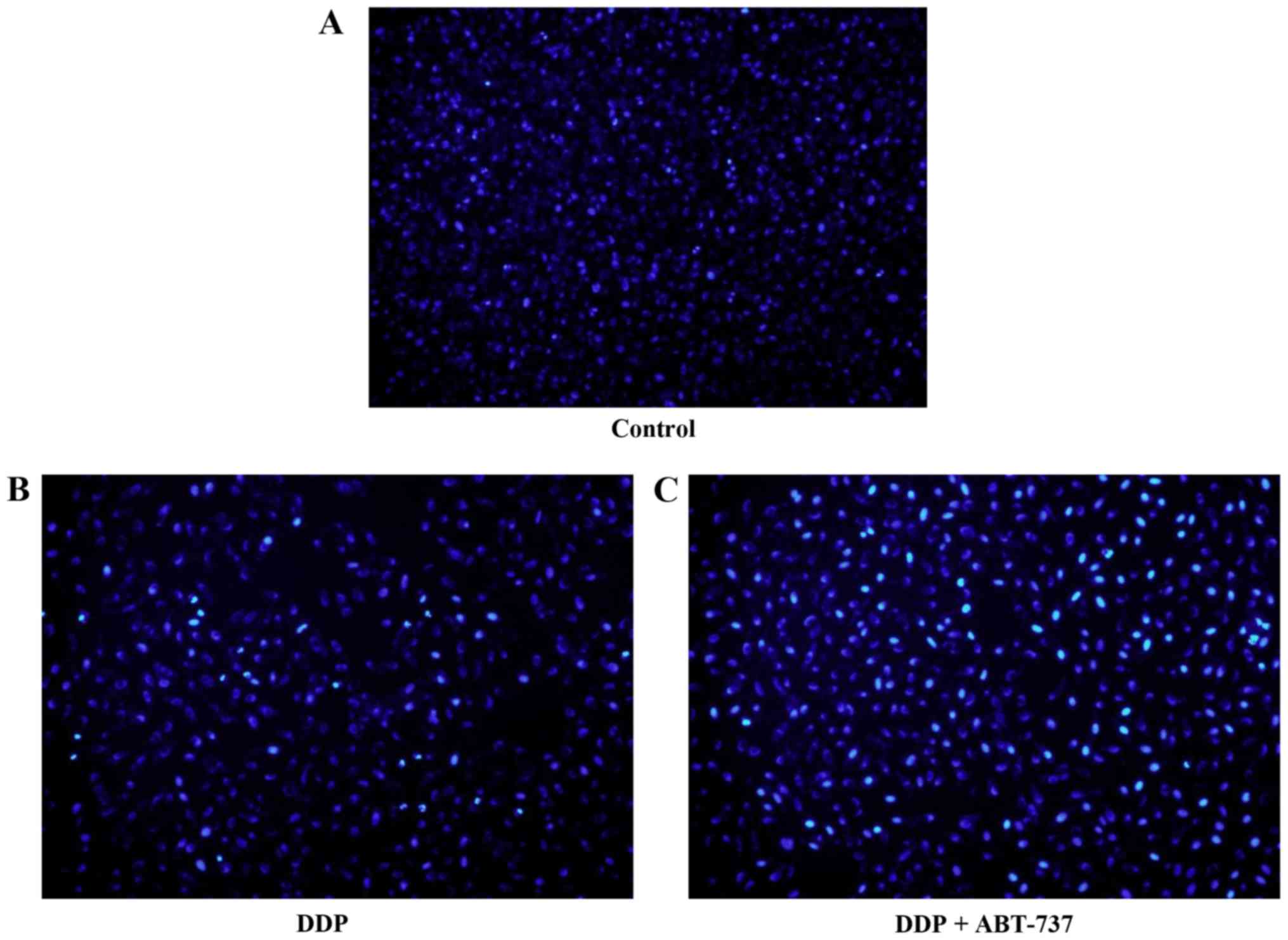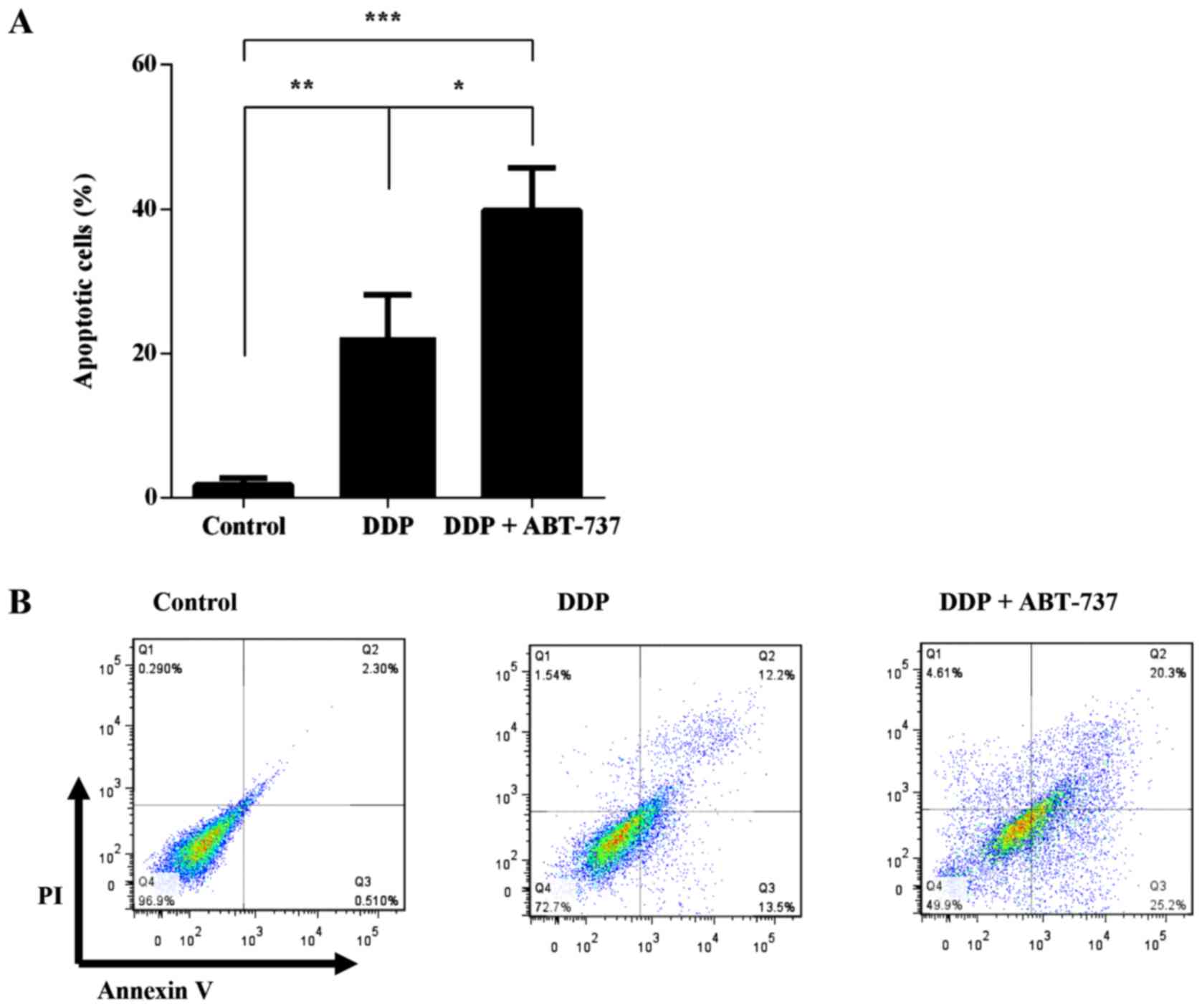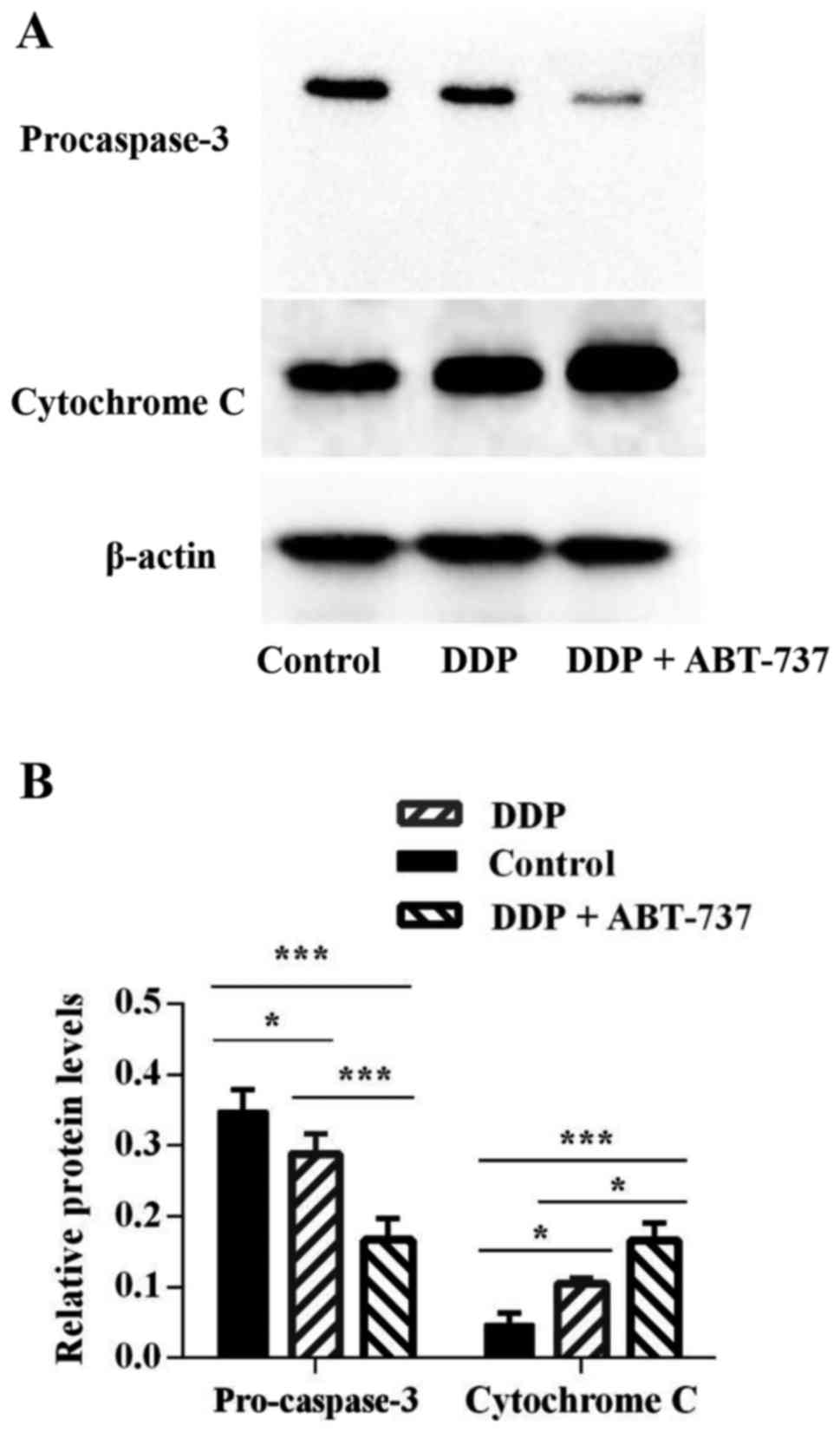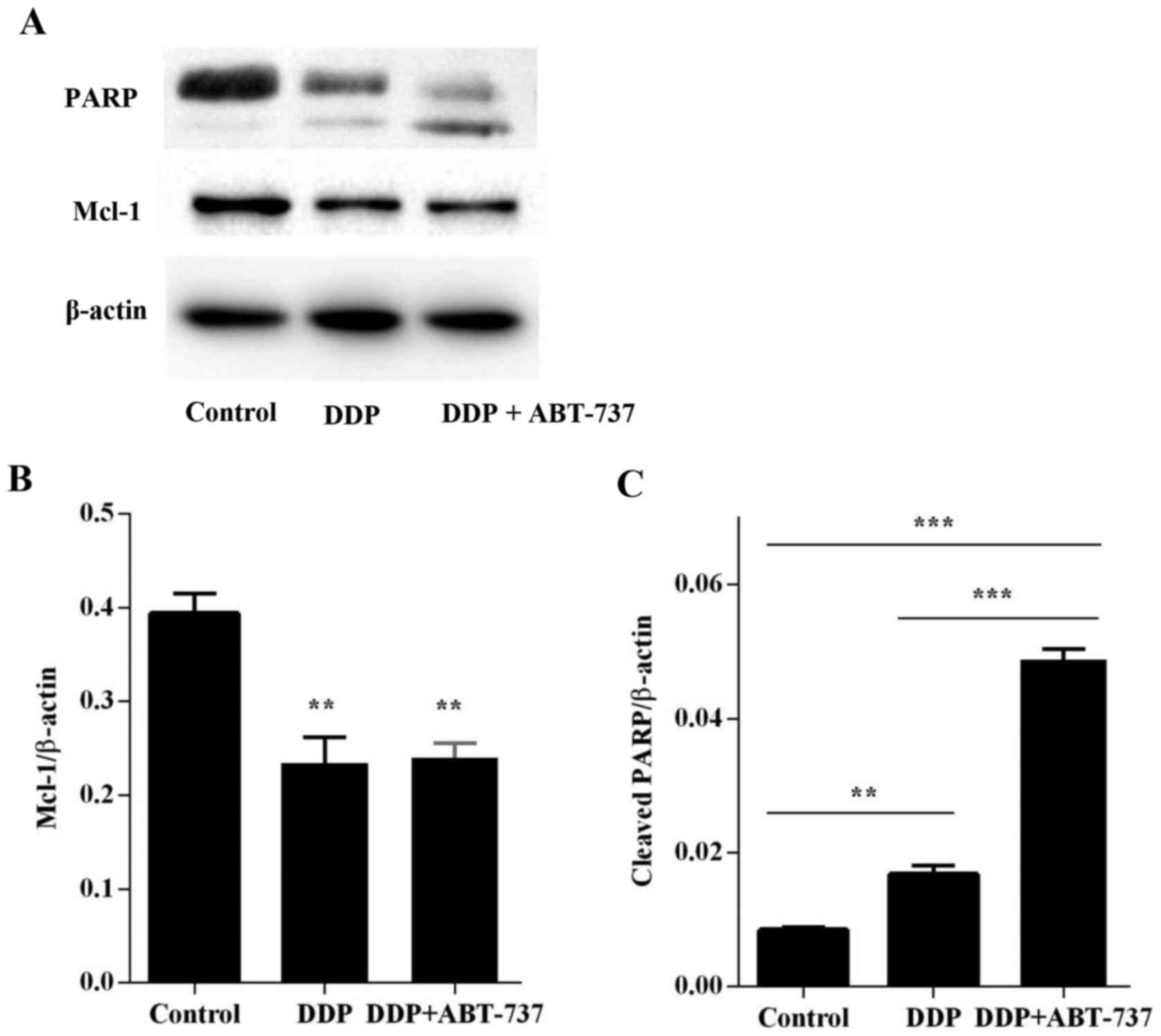|
1
|
Delebinski CI, Georgi S, Kleinsimon S,
Twardziok M, Kopp B, Melzig MF and Seifert G: Analysis of
proliferation and apoptotic induction by 20 steroid glycosides in
143B osteosarcoma cells in vitro. Cell Prolif. 48:600–610. 2015.
View Article : Google Scholar : PubMed/NCBI
|
|
2
|
Liu SY, Deng SY, He YB and Ni GX: miR-451
inhibits cell growth, migration and angiogenesis in human
osteosarcoma via down-regulating IL 6R. Biochem Biophys Res Commun.
482:987–993. 2017. View Article : Google Scholar : PubMed/NCBI
|
|
3
|
Zhang J, Hou W, Chai M, Zhao H, Jia J, Sun
X, Zhao B and Wang R: MicroRNA-127-3p inhibits proliferation and
invasion by targeting SETD8 in human osteosarcoma cells. Biochem
Biophys Res Commun. 469:1006–1011. 2016. View Article : Google Scholar : PubMed/NCBI
|
|
4
|
Bishop MW, Janeway KA and Gorlick R:
Future directions in the treatment of osteosarcoma. Curr Opin
Pediatr. 28:26–33. 2016. View Article : Google Scholar : PubMed/NCBI
|
|
5
|
Isakoff MS, Bielack SS, Meltzer P and
Gorlick R: Osteosarcoma: Current treatment and a collaborative
pathway to success. J Clin Oncol. 33:3029–3035. 2015. View Article : Google Scholar : PubMed/NCBI
|
|
6
|
Gao JZ, Chen FH, Wang L, Wei H and Meng
SL: YM155 inhibits tumor growth and enhances chemosensitivity to
cisplatin in osteosarcoma. Eur Rev Med Pharmacol Sci. 19:2062–2069.
2015.PubMed/NCBI
|
|
7
|
Yu T, Chen C, Sun Y, Sun H, Li TH, Meng J
and Shi X: ABT-737 sensitizes curcumin-induced anti-melanoma cell
activity through facilitating mPTP death pathway. Biochem Biophys
Res Commun. 464:286–291. 2015. View Article : Google Scholar : PubMed/NCBI
|
|
8
|
Kim LH, Shin JA, Jang B, Yang IH, Won DH,
Jeong JH, Chung TH, Cho NP and Cho SD: Sorafenib potentiates
ABT-737-induced apoptosis in human oral cancer cells. Arch Oral
Biol. 73:1–6. 2017. View Article : Google Scholar : PubMed/NCBI
|
|
9
|
Broecker-Preuss M, Becher-Boveleth N,
Müller S and Mann K: The BH3 mimetic drug ABT-737 induces apoptosis
and acts synergistically with chemotherapeutic drugs in thyroid
carcinoma cells. Cancer Cell Int. 16:272016. View Article : Google Scholar : PubMed/NCBI
|
|
10
|
Zheng R, You Z, Jia J, Lin S, Han S, Liu
A, Long H and Wang S: Curcumin enhances the antitumor effect of
ABT-737 via activation of the ROS-ASK1-JNK pathway in
hepatocellular carcinoma cells. Mol Med Rep. 13:1570–1576. 2016.
View Article : Google Scholar : PubMed/NCBI
|
|
11
|
Premkumar DR, Jane EP, DiDomenico JD,
Vukmer NA, Agostino NR and Pollack IF: ABT-737 synergizes with
bortezomib to induce apoptosis, mediated by Bid cleavage, Bax
activation, and mitochondrial dysfunction in an Akt-dependent
context in malignant human glioma cell lines. J Pharmacol Exp Ther.
341:859–872. 2012. View Article : Google Scholar : PubMed/NCBI
|
|
12
|
Rao J, Li F, Zhang RY, Zhou HH and Chen
GA: BH3 mimetic ABT-737 induces apoptosis in CD34+ acute
myeloid leukemia cells and shows synergistic effect with
conventional chemotherapeutic drugs. Asia Pac J Clin Oncol.
13:e144–e152. 2017. View Article : Google Scholar : PubMed/NCBI
|
|
13
|
Trieb K, Sulzbacher I and Kubista B: Bcl-2
correlates with localization but not outcome in human osteosarcoma.
Oncol Lett. 6:559–561. 2013.PubMed/NCBI
|
|
14
|
Pu F, Chen F, Lin S, Chen S, Zhang Z, Wang
B and Shao Z: The synergistic anticancer effect of cisplatin
combined with Oldenlandia diffusa in osteosarcoma MG-63 cell line
in vitro. Onco Targets Ther. 9:255–263. 2016.PubMed/NCBI
|
|
15
|
Yu L, Fan Z, Fang S, Yang J, Gao T, Simões
BM, Eyre R, Guo W and Clarke RB: Cisplatin selects for stem-like
cells in osteosarcoma by activating Notch signaling. Oncotarget.
7:33055–33068. 2016. View Article : Google Scholar : PubMed/NCBI
|
|
16
|
Han XG, Du L, Qiao H, Tu B, Wang YG, Qin
A, Dai KR, Fan QM and Tang TT: CXCR1 knockdown improves the
sensitivity of osteosarcoma to cisplatin. Cancer Lett. 369:405–415.
2015. View Article : Google Scholar : PubMed/NCBI
|
|
17
|
Wu XY, Hao CP, Ling M, Guo CH and Ma W:
Hypoxia-induced apoptosis is blocked by adrenomedullin via
upregulation of Bcl-2 in human osteosarcoma cells. Oncol Rep.
34:787–794. 2015. View Article : Google Scholar : PubMed/NCBI
|
|
18
|
Yu X, Zhou X, Fu C, Wang Q, Nie T, Zou F,
Guo R, Liu H, Zhang B and Dai M: Celastrol induces apoptosis of
human osteosarcoma cells via the mitochondrial apoptotic pathway.
Oncol Rep. 34:1129–1136. 2015. View Article : Google Scholar : PubMed/NCBI
|
|
19
|
Fan Z, Yu H, Cui N, Kong X, Liu X, Chang
Y, Wu Y, Sun L and Wang G: ABT737 enhances cholangiocarcinoma
sensitivity to cisplatin through regulation of mitochondrial
dynamics. Exp Cell Res. 335:68–81. 2015. View Article : Google Scholar : PubMed/NCBI
|
|
20
|
Péchery A, Fauconnet S, Bittard H and
Lascombe I: Apoptotic effect of the selective PPARβ/δ agonist
GW501516 in invasive bladder cancer cells. Tumour Biol.
37:14789–14802. 2016. View Article : Google Scholar : PubMed/NCBI
|
|
21
|
Li J, Yang Z, Li Y, Xia J, Li D, Li H, Ren
M, Liao Y, Yu S, Chen Y, et al: Cell apoptosis, autophagy and
necroptosis in osteosarcoma treatment. Oncotarget. 7:44763–44778.
2016. View Article : Google Scholar : PubMed/NCBI
|
|
22
|
Shen J, Xu L and Zhao Q: Perifosine and
ABT-737 synergistically inhibit lung cancer cells in vitro and in
vivo. Biochem Biophys Res Commun. 473:1170–1176. 2016. View Article : Google Scholar : PubMed/NCBI
|
|
23
|
Xu G, Kuang G, Jiang W, Jiang R and Jiang
D: Polydatin promotes apoptosis through upregulation the ratio of
Bax/Bcl-2 and inhibits proliferation by attenuating the β-catenin
signaling in human osteosarcoma cells. Am J Transl Res. 8:922–931.
2016.PubMed/NCBI
|
|
24
|
Xiong M, Wang L, Yu HL, Han H, Mao D, Chen
J, Zeng Y, He N, Liu ZG, Wang ZY, et al: Ginkgetin exerts growth
inhibitory and apoptotic effects on osteosarcoma cells through
inhibition of STAT3 and activation of caspase-3/9. Oncol Rep.
35:1034–1040. 2016. View Article : Google Scholar : PubMed/NCBI
|
|
25
|
Li YL, Sun J, Hu X, Pan YN, Yan W, Li QY,
Wang F, Lin NM and Zhang C: Epothilone B induces apoptosis and
enhances apoptotic effects of ABT-737 on human cancer cells via
PI3K/AKT/mTOR pathway. J Cancer Res Clin Oncol. 142:2281–2289.
2016. View Article : Google Scholar : PubMed/NCBI
|
|
26
|
Niu NK, Wang ZL, Pan ST, Ding HQ, Au GH,
He ZX, Zhou ZW, Xiao G, Yang YX, Zhang X, et al: Pro-apoptotic and
pro-autophagic effects of the Aurora kinase A inhibitor alisertib
(MLN8237) on human osteosarcoma U-2 OS and MG-63 cells through the
activation of mitochondria-mediated pathway and inhibition of p38
MAPK/PI3K/Akt/mTOR signaling pathway. Drug Des Devel Ther.
9:1555–1584. 2015.PubMed/NCBI
|
|
27
|
Lin CH, Hong YC and Kao SH: Aeroallergen
Der p 2 induces apoptosis of bronchial epithelial BEAS-2B cells via
activation of both intrinsic and extrinsic pathway. Cell Biosci.
5:712015. View Article : Google Scholar : PubMed/NCBI
|
|
28
|
Zhe N, Chen S, Zhou Z, Liu P, Lin X, Yu M,
Cheng B, Zhang Y and Wang J: HIF-1α inhibition by
2-methoxyestradiol induces cell death via activation of the
mitochondrial apoptotic pathway in acute myeloid leukemia. Cancer
Biol Ther. 17:625–634. 2016. View Article : Google Scholar : PubMed/NCBI
|
|
29
|
Lee YJ, Kim SA and Lee SH: Hyaluronan
suppresses lidocaine-induced apoptosis of human chondrocytes in
vitro by inhibiting the p53-dependent mitochondrial apoptotic
pathway. Acta Pharmacol Sin. 37:664–673. 2016. View Article : Google Scholar : PubMed/NCBI
|
|
30
|
Jiang X, Li L, Ying Z, Pan C, Huang S, Li
L, Dai M, Yan B, Li M, Jiang H, et al: A small molecule that
protects the integrity of the electron transfer chain blocks the
mitochondrial apoptotic pathway. Mol Cell. 63:229–239. 2016.
View Article : Google Scholar : PubMed/NCBI
|
|
31
|
Zhai X, Ding Y, Wang Q, Zhang H and Li F:
Rutin acid ameliorates neural apoptosis induced by traumatic brain
injury via mitochondrial pathways in mice. Neuroimmunomodulation.
23:179–187. 2016. View Article : Google Scholar : PubMed/NCBI
|
|
32
|
Tian X, Shi Y, Liu N, Yan Y, Li T, Hua P
and Liu B: Upregulation of DAPK contributes to homocysteine-induced
endothelial apoptosis via the modulation of Bcl2/Bax and activation
of caspase 3. Mol Med Rep. 14:4173–4179. 2016. View Article : Google Scholar : PubMed/NCBI
|
|
33
|
Wu Y, Shamoto-Nagai M, Maruyama W, Osawa T
and Naoi M: Phytochemicals prevent mitochondrial membrane
permeabilization and protect SH-SY5Y cells against apoptosis
induced by PK11195, a ligand for outer membrane translocator
protein. J Neural Transm (Vienna). 124:89–98. 2017. View Article : Google Scholar : PubMed/NCBI
|
|
34
|
Zhang F, Chen L, Jin H, Shao J, Wu L, Lu Y
and Zheng S: Activation of Fas death receptor pathway and Bid in
hepatocytes is involved in saikosaponin D induction of
hepatotoxicity. Environ Toxicol Pharmacol. 41:8–13. 2016.
View Article : Google Scholar : PubMed/NCBI
|
|
35
|
Horie Y, Nemoto H, Itoh M, Kosaka H and
Morita K: Fermented brown rice extract causes apoptotic death of
human acute lymphoblastic leukemia cells via death receptor
pathway. Appl Biochem Biotechnol. 178:1599–1611. 2016. View Article : Google Scholar : PubMed/NCBI
|
|
36
|
Kwon SB, Kim MJ, Yang JM, Lee HP, Hong JT,
Jeong HS, Kim ES and Yoon DY: Cudrania tricuspidata stem
extract induces apoptosis via the extrinsic pathway in SiHa
cervical cancer cells. PLoS One. 11:e01502352016. View Article : Google Scholar : PubMed/NCBI
|
|
37
|
Han MH, Lee WS, Nagappan A, Kim HJ, Park
C, Kim GY, Hong SH, Kim ND, Kim G, Ryu CH, et al: Polyphenols from
Korean prostrate spurge Euphorbia supina induce apoptosis
through the Fas-associated extrinsic pathway and activation of ERK
in human leukemic U937 cells. Oncol Rep. 36:99–107. 2016.
View Article : Google Scholar : PubMed/NCBI
|
|
38
|
Chen H, Tang X, Zhou B, Xu N and Wang Y:
Mechanism of Deca-BDE-induced apoptosis in Neuro-2a cells: Role of
death-receptor pathway and reactive oxygen species-mediated
mitochondrial pathway. J Environ Sci (China). 46:241–251. 2016.
View Article : Google Scholar : PubMed/NCBI
|
|
39
|
Liang S, Sun K, Wang Y, Dong S, Wang C,
Liu L and Wu Y: Role of Cyt-C/caspases-9,3, Bax/Bcl-2 and the FAS
death receptor pathway in apoptosis induced by zinc oxide
nanoparticles in human aortic endothelial cells and the protective
effect by alpha-lipoic acid. Chem Biol Interact. 258:40–51. 2016.
View Article : Google Scholar : PubMed/NCBI
|




















